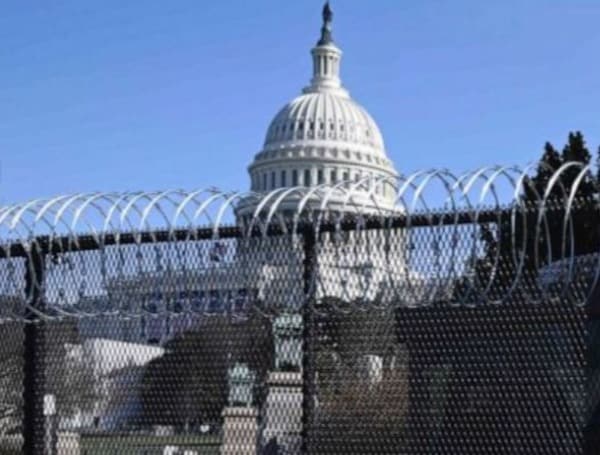Ernie Pyle was “embedded” decades before that became a thing.
Pyle is arguably America’s most famous war correspondent. During World War II, he spent roughly two years living among the troops who slogged their way through Africa, Europe, and Asia to defeat the tyrannical powers that menaced the world order.
As the National World War II Museum recounts it, Pyle was always close to the front, ducking and covering with the infantrymen who dodged enemy bombs and mortars, seeing their lives ended and bodies maimed. He was driven there, the museum notes, by a sense of guilt, believing it was wrong for him to remain home when “millions of other men had no option to stay home.”
In April 1945, Pyle accompanied some soldiers ashore in Okinawa and was killed by a Japanese machine gunner.
Suffice to say, they don’t make them like they used to.
As Democrats and liberals generally eagerly promoted the six-month anniversary of the Jan. 6 U.S. Capitol riot this week, Vice.com posted an article revealing Ernie Pyle-like reporters are few and far between in the contemporary press corps.
As Vice noted in a promotional tweet on Tuesday, “Reporters who survived the deadly Capitol riot are still struggling. Some won’t go back into the building. Several have sought therapy to deal with trauma. Many still aren’t sleeping well.”
Now, readers of The Free Press would recall that the riot was “deadly” for only one person, U.S. Air Force veteran and Trump fan Ashli Babbitt, who was shot dead by a U.S. Capitol police officer.
Liberal claims about other deaths attributable to the riots have been debunked.
Yet it seems our elite journalists, who watched the mayhem, perhaps incited by the FBI’s own informants, unfold for a couple of hours just cannot take it.
“The emotional scars are still there. Six months after their office was attacked, the Capitol Hill press corps is grappling with how to cover the insurrection’s fallout, as well as its impact on them personally and professionally,” Vice reported.
“Some reporters who were there won’t go back into the building. A number have sought therapy to deal with the trauma. One longtime Capitol Hill reporter opted for early retirement shortly after living through the riot. Many still aren’t sleeping well.”
One Bloomberg reporter was quoted, “It’s eerily back to normal. But sometimes It feels like one of those horror movies, like the end of ‘Jaws.’ Everything feels copacetic on the beach. But you wonder if there’s anything out there.”
“I shut my emotions,” he added. “If I went down, I was going to go down fighting. I’m going to do my job.”
Cue “The Battle Hymn of the Republic.”
The reporter claimed Cambodian soldiers once drew guns on him. But it was the unarmed, MAGA-supporting dolts who have left him with a bout of PTSD, he said.
Vice further noted, “And while these reporters, and many others, have kept working, there’s been extensive conversations among journalists about burnout, frustration, and dismay about the state of the country.”
One of them told Vice, “I can’t tell you how many conversations I’ve had with reporters of ‘I don’t know if I want to do this anymore, I’m not sure if I want to be here anymore.’ But I’m not one of those people.” Another said, “Anyone who doesn’t want to come up here again, I don’t blame them at all, even a little bit, one iota.”
None of these folks were harmed, much less targeted, by these protesters, who, it seems, based on the charges filed against them, are more and more turning out to be trespassers instead of revolutionaries.
Somewhere Ernie Pyle shakes his head. But as we’ve seen in the Trump era, to borrow from Marshall McLuhan, the media is the message.
Android Users, Click Here To Download The Free Press App And Never Miss A Story. It’s Free And Coming To Apple Users Soon.
Support journalism by clicking here to our gofundme or sign up for our free newsletter by clicking here


